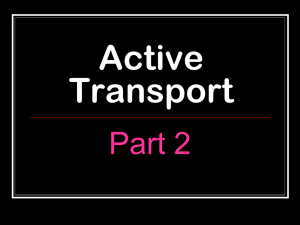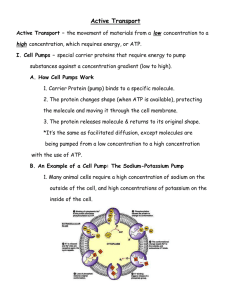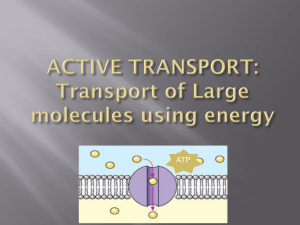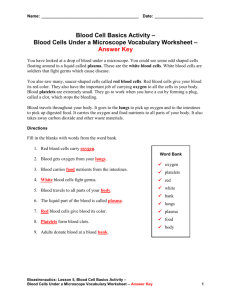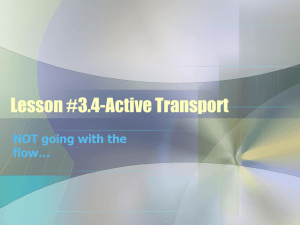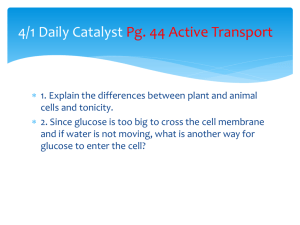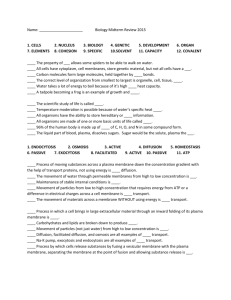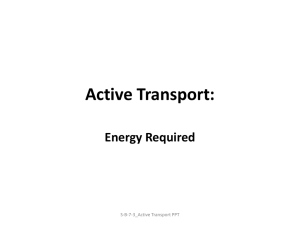Cellular Transport Quiz
advertisement
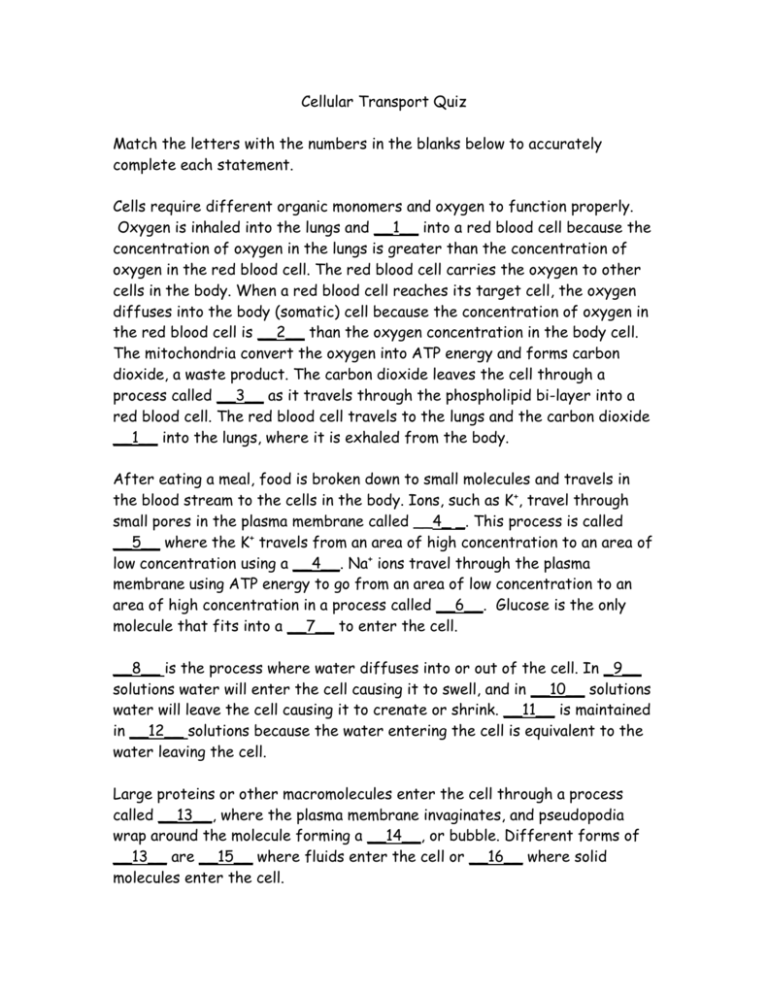
Cellular Transport Quiz Match the letters with the numbers in the blanks below to accurately complete each statement. Cells require different organic monomers and oxygen to function properly. Oxygen is inhaled into the lungs and __1__ into a red blood cell because the concentration of oxygen in the lungs is greater than the concentration of oxygen in the red blood cell. The red blood cell carries the oxygen to other cells in the body. When a red blood cell reaches its target cell, the oxygen diffuses into the body (somatic) cell because the concentration of oxygen in the red blood cell is __2__ than the oxygen concentration in the body cell. The mitochondria convert the oxygen into ATP energy and forms carbon dioxide, a waste product. The carbon dioxide leaves the cell through a process called __3__ as it travels through the phospholipid bi-layer into a red blood cell. The red blood cell travels to the lungs and the carbon dioxide __1__ into the lungs, where it is exhaled from the body. After eating a meal, food is broken down to small molecules and travels in the blood stream to the cells in the body. Ions, such as K+, travel through small pores in the plasma membrane called __4_ _. This process is called __5__ where the K+ travels from an area of high concentration to an area of low concentration using a __4__. Na+ ions travel through the plasma membrane using ATP energy to go from an area of low concentration to an area of high concentration in a process called __6__. Glucose is the only molecule that fits into a __7__ to enter the cell. __8__ is the process where water diffuses into or out of the cell. In _9__ solutions water will enter the cell causing it to swell, and in __10__ solutions water will leave the cell causing it to crenate or shrink. __11__ is maintained in __12__ solutions because the water entering the cell is equivalent to the water leaving the cell. Large proteins or other macromolecules enter the cell through a process called __13__, where the plasma membrane invaginates, and pseudopodia wrap around the molecule forming a __14__, or bubble. Different forms of __13__ are __15__ where fluids enter the cell or __16__ where solid molecules enter the cell. __3__, __5__, and __8__ are examples of __17__, where molecules travel from an area of high concentration to an area of low concentration without the use of ATP energy. Receptors on the plasma membrane are responsible for attaching to special molecules before they can be brought into the cell through the process of __18__. A __19__ can attach to a vesicle and release digestive enzymes to break complex polymers into __20__, which can be used by the cell. A. B. C. D. E. F. G. H. I. J. K. Active Transport L. Hypotonic W. Pinocytosis Carrier Protein M. Isotonic X. Simple Polymers Channel Protein N. Less Y. Vesicle Diffuse(s) O. Lysosome Z. Water Diffusion P. Monomers Endocytosis Q. Osmosis Exocytosis R. Passive Transport Facilitated Diffusion S. Peroxisome Greater T. Phagocytosis Homeostasis U. Receptor Mediated Exocytosis Hypertonic V. Receptor Mediated Endocytosis 1. _____ 11. _____ 2. _____ 12. _____ 3. _____ 13. _____ 4. _____ 14. _____ 5. _____ 15. _____ 6. _____ 16. _____ 7. _____ 17. _____ 8. _____ 18. _____ 9. _____ 19. _____ 10. _____ 20. _____ Name:
